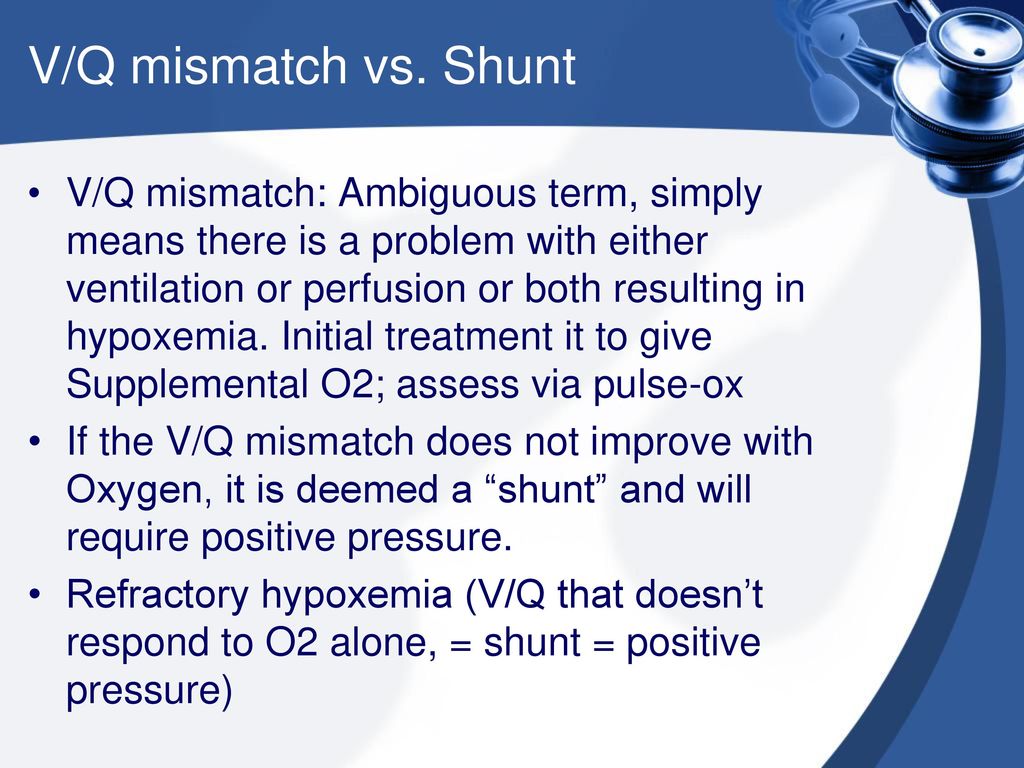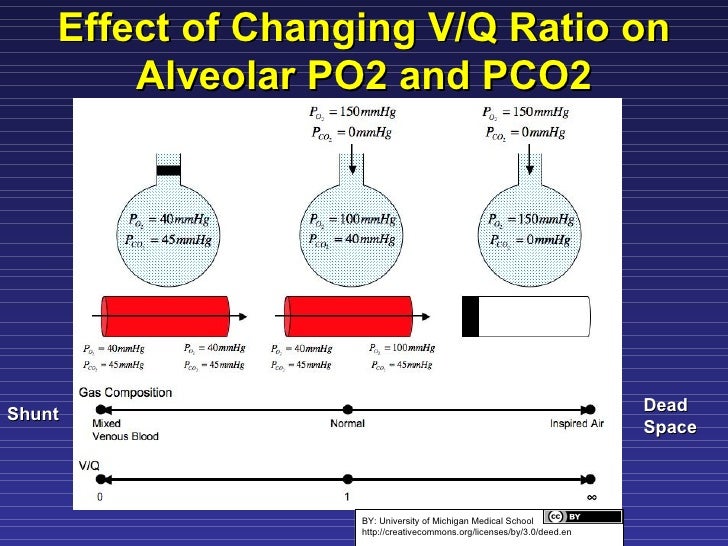Vq Mismatch Vs Shunt

Pulmonary shunting is minimized by the normal reflex constriction of pulmonary vasculature to hypoxia.
Vq mismatch vs shunt. In respiratory physiology the ventilationperfusion ratio vq ratio or vq ratio is a ratio used to assess the efficiency and adequacy of the matching of two variables. Alternatively you may have a perfusion problem. If you were going to write a textbook or publish an article youd want to use the term deadspace. There are 2 types of mismatch.
There are 2 types of mismatch. This would be considered a vq mismatch relating to a problem with the v side of the equation. I know this is a step 1 topic but uworld and step up to medicine are differing on which pathology result in a vq mismatch and shunt. V or v ventilation the air that reaches the alveoli.
Learn vocabulary terms and more with flashcards games and other study tools. Discussion of 6 possible causes of hypoxemia including hypoventilation diffusion impairments anatomic shunts and ventilation perfusion mismatch. The ventilationperfusion ratio is often abbreviated vq. Start studying vq mismatch and shunt.
Technically both shunt and deadspace are vq mismatches but we often use the term vq mismatch to mean deadspace such as a pulmonary embolism. The ventilation perfusion ratio is exactly what you think it should be the ratio between the amount of air getting to the alveoli the alveolar ventilation v in mlmin and the amount of blood being sent to the lungs the cardiac output or q also in mlmin. The ventilation perfusion vq ratio. They are on the same spectrum vq mismatch is not quite as little oxygen as a full shunt full shunt is the blood receives no oxygen by either mechanism you mentioned.
For example excess pulmonary dead spacesuch as. Uworld is saying that atelectasia pulmonary edema and pneumonia result in a mismatch while step up is saying that it causes a shunt. Dead space and shunt. Vq mismatch is common and often effects our patients ventilation and oxygenation.
















